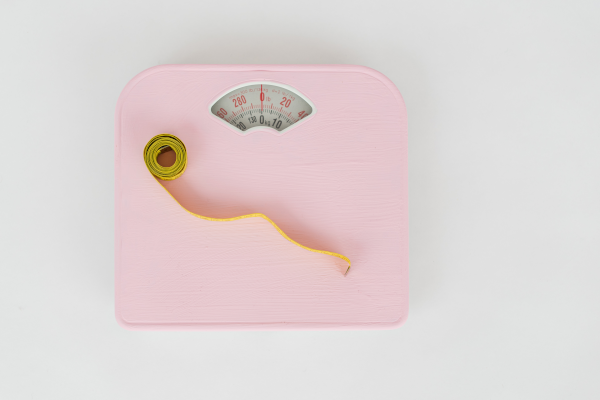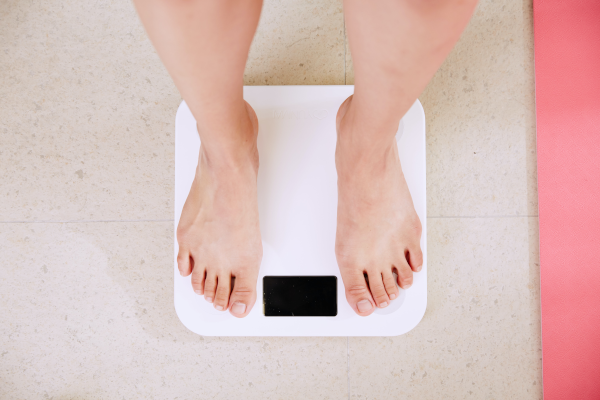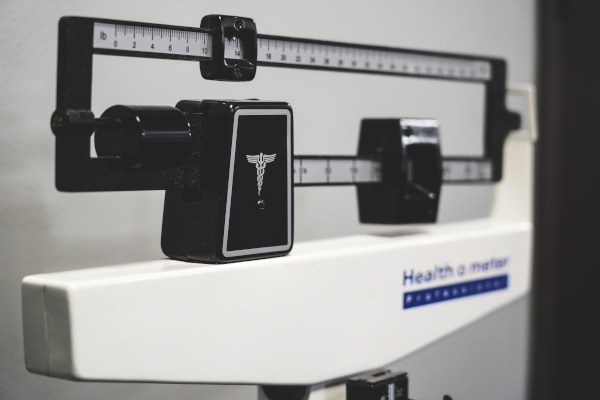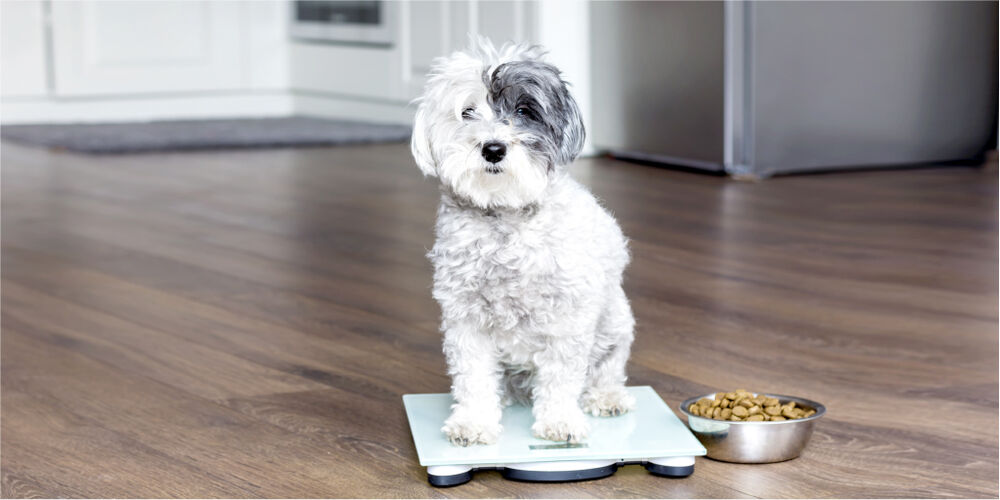So you’ve decided to commit to a weight loss, weight maintenance, or overall wellbeing journey. Congrats! Your next step is getting the right tools to track your progress.
Why It’s Important To Track Your Weight

Ah, the almighty bathroom scale. Friend or foe?
We’d say friend … depending on how you use it. Remember, your scale is a tool to help you, not a judge that determines your willpower or worth as a person.
When you track your weight, don’t obsess over every half pound or beat yourself up over bloat. The goal is to see whether you’re losing, gaining, or maintaining weight overall and to observe how quickly (or slowly) your weight is changing. Once you have that info, you can modify your diet and fitness routine to work toward the results you want.
Types of Scales & What Each Scale Does
There are many different kinds of scales available in-store and online at prices ranging from 15 bucks to hundreds of dollars. Some scales only tell you your weight, while others have seemingly endless bells and whistles.
So how do you know which type of scale to choose? We’ve broken down the basic kinds of scales and their respective pros and cons below.
Analog Scales

Analog scales, also known as dial or mechanical scales, were the standard for many years. Underneath the surface, these pieces of equipment house a complex system of simple machines.
Pros:
- Affordable
- Sturdy
- No batteries
Cons:
- Less accurate
- Difficult to read
- Outdated design
- Can’t sync to smart devices
When you step on the face of a mechanical scale, four levers, four brackets, a spring plate, and a spring capture your evenly distributed weight. The spring plate moves down, and a pivot, rack, and pinion gear convert this movement into circular motion that spins the dial. And voila — the red line hovers over the correct weight!
Confused by the physics? We don’t blame you. Here’s a video that shows the inner workings of an analog scale.
Since the components aren’t electronic, analog scales are relatively cheap. But once any piece wears out, you’ll get an inaccurate reading, at which point you’ll need to replace the parts or purchase a new scale.
Analog scales are also slightly more inaccurate than digital scales. If you’re measuring week-to-week progress, this probably won’t be an issue for you, as you’ll still be able to see whether you’re generally gaining, losing, or maintaining. Just be sure to recalibrate your scale regularly for a consistent baseline.
Basic Digital Scales

Basic digital scales are a good option available at a midrange price point. They display your weight on a screen to the nearest decimal point but lack some of the extra features of smart scales.
Pros:
- More accurate than analog scales
- Precise measurements
- Less expensive than smart scales
Cons:
- Must replace batteries
- More expensive than analog scales
- Can’t sync to smart devices
Digital scales have both mechanical and electronic components. Whereas standing on an analog scale moves the spring plate and spring, standing on a digital scale bends a load cell. The load cell then stretches and compresses the strain gauge, a strip of conducting wire. The change in stress on the strain gauge — and therefore, the change in electrical resistance — is the basis for the weight measurement.
So how do these electrical changes turn into a number on the screen? An analog-to-digital converter and microchip transform the signal so the user can read their weight.
Digital scales are generally affordable, even if they’re a bit more expensive than analog scales. Their increased accuracy and more modern design make them a popular choice, but you will have to deal with replacing the batteries. Keep in mind that these scales must be calibrated and used on the same hard, flat surface every time if you want precise and accurate readings.
Smart Scales

Smart scales are a subcategory of digital scales. They provide more detailed health information and allow you to sync data to your electronic devices to make tracking a breeze.
Pros:
- More accurate than analog scales
- Precise measurements
- Sync to smart devices
- Additional health metrics
- Sleek, futuristic design
Cons:
- Must replace batteries
- Higher price
- Potential tech trouble
There are a plethora of smart scale companies purporting to measure all sorts of health metrics, but can you really believe these claims?
Well … yes and no.
Smart scales rely on a technology called biometrical impedance analysis. When you step on the sensors, the scale sends tiny electrical currents through your feet to the rest of your body to measure resistance. Water, fat, bone, and muscle all have different resistance to electricity, and this is how the scale determines body composition.
Here are some metrics smart scales can estimate:
- Body fat percentage
- Body water percentage
- Muscle mass
- Bone mass
- Body mass index
- Metabolic age
Keep in mind that these are approximations. For some measurements, you’ll need to enter additional info, like height and sex, into a companion app. Results for these metrics also vary based on age, hydration, body type, scale quality, and of course, user error.
It’s a good idea to thoroughly research any smart scale brand before spending the big bucks. And if you don’t want to drop money on a fancy scale after all, you can still get pretty far with a good old-fashioned tape measure and body mass index calculator.
What About Doctor’s Office Scales?

OK, so you probably aren’t going to buy a medical scale. First, they’re way too large to fit in the bathroom. And second, newer models are prohibitively expensive for most consumers.
But for those who are curious: Doctor’s office scales, aka balance beam scales, use a system of levers and rods to capture your weight. The exact measurement is determined using two poise bars. Each bar has a movable poise weight and markings for various weight increments. A pointer at the end of the poise bars tells you when the correct weight has been reached.
When you step on the scale, the pointer moves and hits the edge of the window, indicating weight has been placed on the scale. To get a reading, you nudge the larger poise weight along the lower poise bar — and then the smaller poise weight along the upper poise bar — until the pointer is hovering in the middle of the window. You add the numbers on both poise bars to reach your final weight measurement.
Check out this video to see how an antique medical scale works.
Additional Help for Your Weight Journey

Scales are awesome tools, but sometimes daily weigh-ins aren’t enough to spur progress. If you’re struggling to maintain or lose weight, we have a whole category of weight loss products to help you on your quest to eat, feel, look, and live better.
We also offer weight tracking and progress photos through our IsaLife™ app, along with other useful features like meal tracking, coaching support, and IsaBody Challenge® registration.
Whatever method you choose to take control of your health, we know you can do it!




